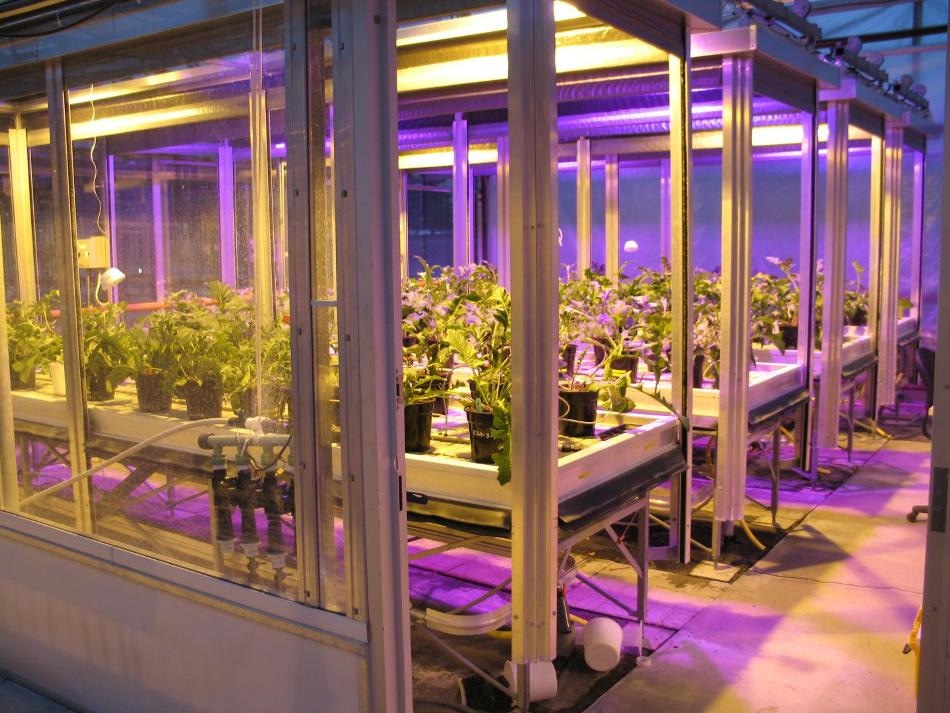Mar 27 2019
There is not sufficient natural light for the creation of a number of greenhouse commodities during the duskier months of the year in countries such as Canada and others in higher latitudes. In these zones, it is critical for growers of year-round commodities to supplement their naturally occurring lighting shortage with artificial lighting to meet their crops’ economic minimum lighting necessities.
 Benches alternatingly lit with HPS or LED supplemental lights. (Image credit: David Llewellyn)
Benches alternatingly lit with HPS or LED supplemental lights. (Image credit: David Llewellyn)
So far, high-pressure sodium (HPS) lamps have been the most economically practical supplemental lighting solution available to greenhouse growers. But in recent years, light-emitting diode (LED) technology has enhanced considerably and currently offers the prospect of delivering greater energy efficiency and targeted wavelength light in long-term fixtures.
Certain horticultural LED technologies can radically alter the intensity and spectral output in real time, boosting their potential to be used for photomorphogenic, photosynthetic, and photoperiodic applications.
Dave Llewellyn, Katherine Schiestel, and Youbin Zheng conducted a research at the University of Guelph to establish the degree to which these LED developments could benefit greenhouses in the care and propagation of plants during longer-term exposure to add-on lighting and to examine the potential for LED lighting technologies to substitute conventional HPS lighting systems. The scientists examined the production of selections of cut gerbera under either LED or HPS supplemental lighting at the same canopy-level concentrations.
Their conclusions can be found in the article titled “Light-emitting Diodes Can Replace High-pressure Sodium Lighting for Cut Gerbera Production”, published in HortScience.
A majority of the treatment effects on harvest and postharvest quality metrics of sought-after flowers specified that the LED treatment typically yielded higher-quality flowers than the HPS treatment. However, it is uncertain whether the magnitude of any of the witnessed treatment differences would lead to economically noteworthy increases in profit or crop productivity.
The authors came to the conclusion that LEDs could replace HPS for supplemental lighting for cut gerbera production during darker times of the year. Economic factors associated with preliminary cost and potential electricity costs would need to be assessed on a case-by-case basis to establish which supplemental lighting solution is most suitable for all growers and production setups.
It is a generally held conviction that supplemental HPS lighting boosts the canopy temperature relative to LED lighting because of integrally higher levels of radiant heat directed from HPS fittings toward the canopy. Whether extra heat is an advantage or a problem is contingent on the production situation and environmental control strategy, although foliar heating is frequently touted as an advantage of HPS lighting.
The scientists learned that LED lighting is commonly more advantageous to greenhouse production than is HPS lighting.